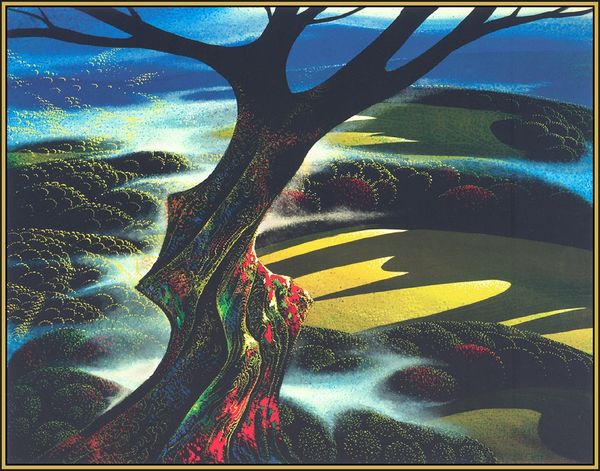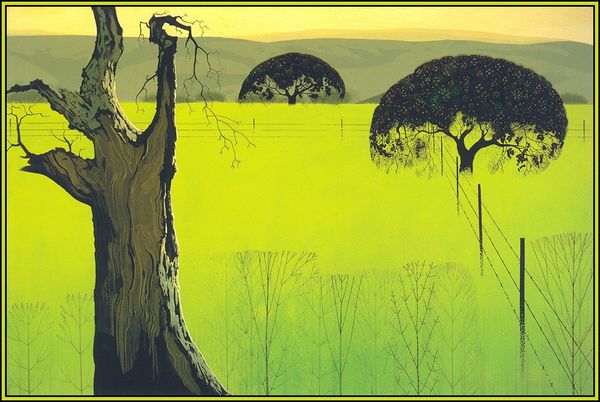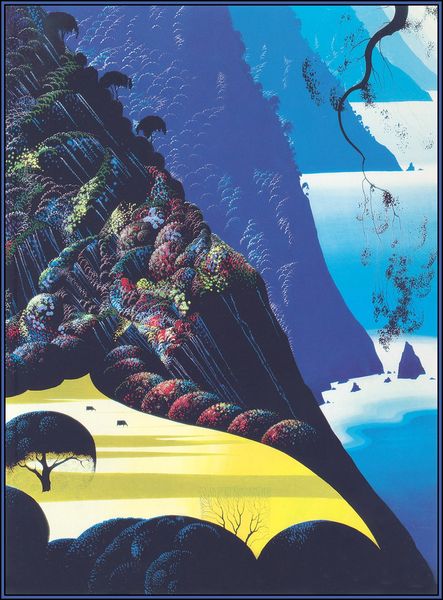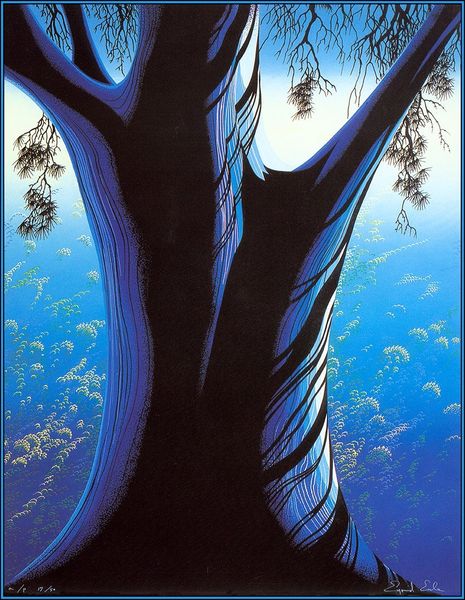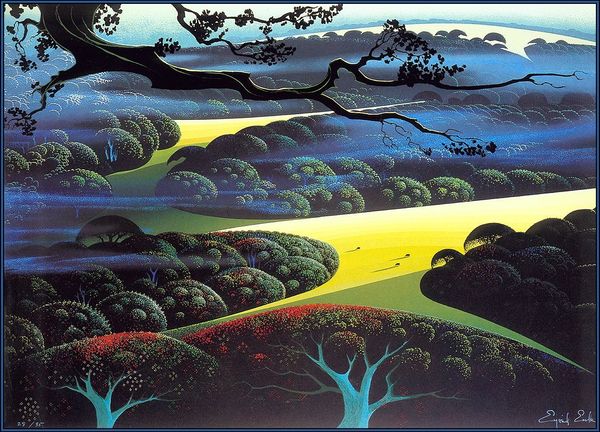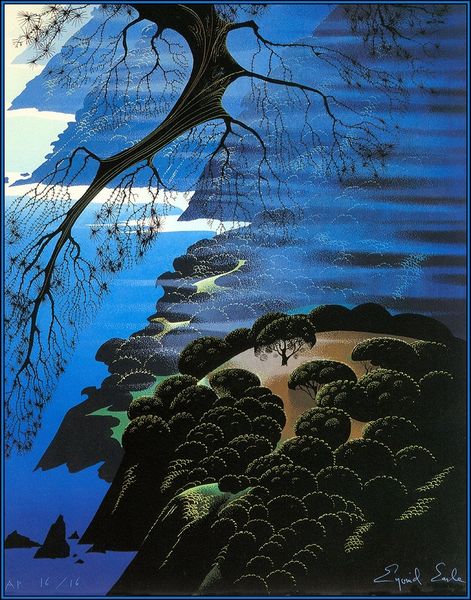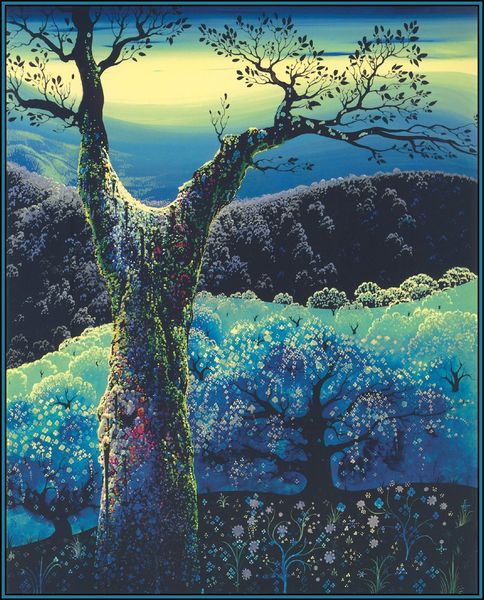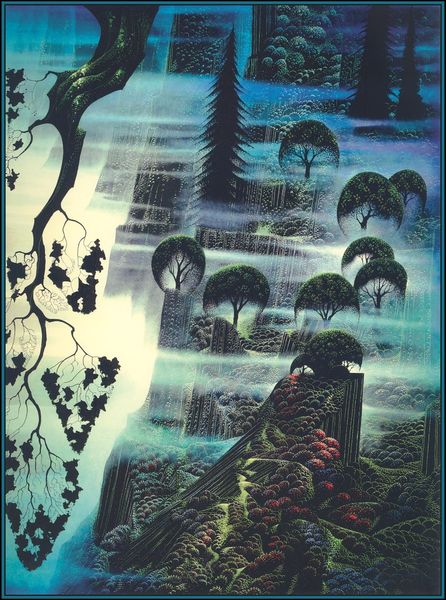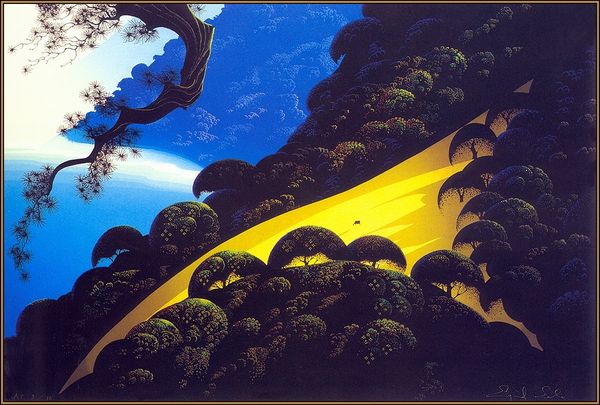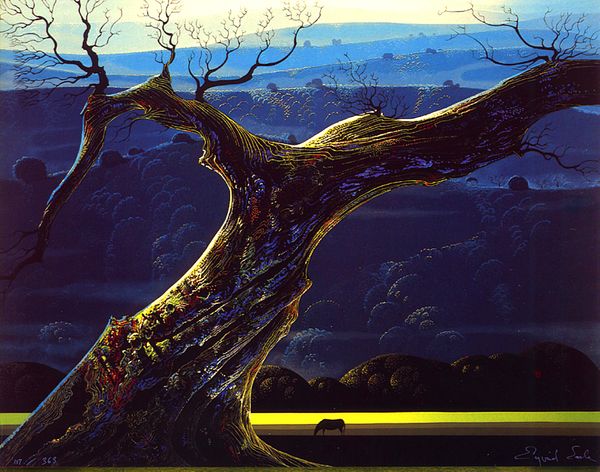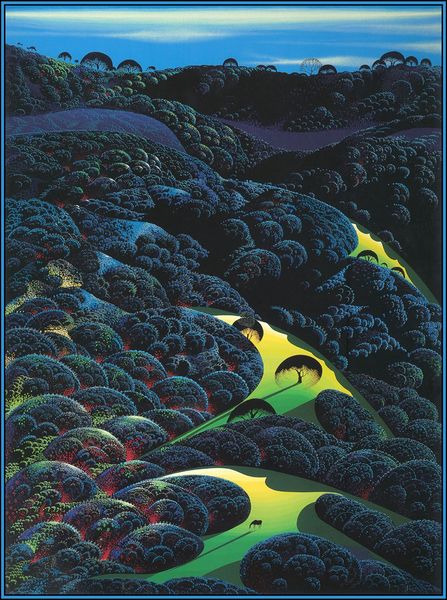
tempera, painting
#
tempera
#
painting
#
landscape
#
geometric
#
naïve-art
Copyright: Eyvind Earle,Fair Use
Editor: This tempera painting is titled *Distant Meadow*, by Eyvind Earle. There’s something almost unnerving about the hyper-defined geometric forms. It's as though I’m looking at nature rendered through the lens of graphic design. What do you make of Earle's style in the context of landscape painting? Curator: It’s crucial to consider Earle's background to fully understand this work. He was deeply embedded in the visual culture of mid-century America, particularly through his work with Disney. "Distant Meadow" reflects that commercial sensibility; landscape tradition is mediated by distinct, hard-edged shapes. It reflects a very *designed* vision of nature that served entertainment and consumer culture. Editor: So, the ‘Naïve art’ style tag—is it fair to say it is ‘naive’ in the purest sense of the word? Curator: That's where it gets interesting, isn’t it? He presents nature through simplified forms. We might call it 'stylized' rather than truly naïve. The "naive art" label can be tricky, because it risks essentializing the artist as untrained. But Earle had specific training; he chose a distinct and purposeful aesthetic language. What public role does this choice then imply? Editor: It does feel manufactured rather than naturally naïve. He deliberately uses the naive art look to represent the idealized landscapes of America. This allows mass production of a seemingly unique natural scenery, right? Curator: Exactly! Earle essentially aestheticizes it. That geometric order speaks volumes about mid-century culture's aspiration to control nature, presenting this visual order to the wider American public through these images. Editor: I never thought of landscape as something that could be co-opted so deliberately for these aspirations! Thanks for pointing that out. Curator: It makes one consider how all representations are shaped by such aspirations. It enriches my view too.
Comments
No comments
Be the first to comment and join the conversation on the ultimate creative platform.

